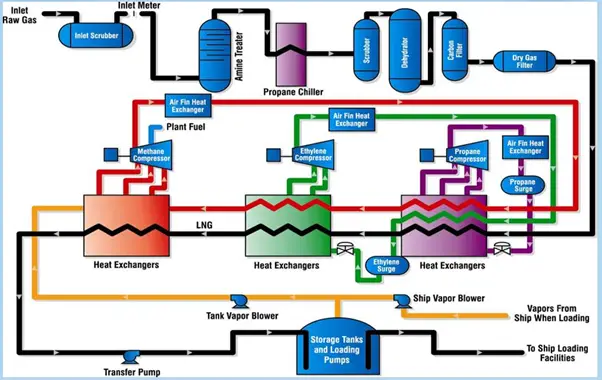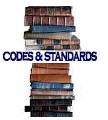The full form of ASTM is the American Society for Testing and Materials. It is an internationally recognized body. They are widely familiar as most oil and gas professionals must have referred to some of their standards. Founded in 1902, ASTM International develops and delivers voluntary consensus standards for improving product quality. These ASTM standards also make products safer and improve international standardization which in turn facilitates trade. In the year 2001, ASTM changed its name to ASTM International.
The standards developed and published by the ASTM include a wide range of materials, products, systems, and services. There are currently 12,575+ ASTM standards that are operating globally. The organization has its headquarters in West Conshohocken, Pennsylvania.
ASTM Standards
More than thirty thousand ASTM members from 140+ countries join together to provide their technical expertise for the development of ASTM standards used worldwide. The standards developed by the American Society for Testing and Materials serve more than 150 global industries. Some of the areas where ASTM standards are predominant are:
- Construction
- Consumer products
- Metals
- Paints
- Plastics
- Textiles
- Petroleum
- Energy
- Environment
- Electronics
- Medical services, devices, etc
Development of ASTM standards
The main reason for their diverse and broad range of standards development work within ASTM International is their open process. Highly expert professionals from all over the globe participate in the ASTM system. Due to the very high level of technical quality, almost 50 percent of ASTM standards are used and distributed outside the United States.
The use of online technologies by ASTM International not only encourages open participation and responsiveness to industry needs but also facilitates broad global input. The ASTM organization practice internet-based standards development forums with 24/7 access worldwide. The success of ASTM also pertains to its online balloting, electronic minutes and templates, virtual meetings, and state-of-the-art distribution methods.
Services of ASTM International
The main service of ASTM international is to publish and distribute high-quality technical standards. Additionally, ASTM International provides services that expand the knowledge and application of standards. They conduct various programs throughout the year. Some of the ASTM programs are:
- Symposia,
- Proficiency testing programs,
- Publications in a variety of formats, and
- Technical training courses.
ASTM publishes a monthly magazine, Standardization News, that provides updated information on standards development around the world.
Use of ASTM standards
There is a broad range of use for the ASTM standards. They are widely used in research and development, product testing and acceptance, quality systems, and commercial transactions throughout the globe. ASTM standards are so popular that they are synonymous with today’s competitive business strategies.
ASTM Annual book for Steel
The Annual Book of ASTM Standards for Steel has 8 volumes in total. It contains all relevant materials like formally approved ASTM standard classifications, specifications, test methods, guides, practices, terminologies, proposals, etc. These terms in the Regulations Governing ASTM Technical Committees are defined as follows:
- Steel Pipes, Tubes, and Fittings
- Steel Plates for General Structure
- Steel Plates for Boiler and Pressure Vessels
- Steels for Machine Structural Use
- Steels for Special Purposes
The following data are provided in each standard:
- Standard number and year
- Grade, Chemical composition, and Mechanical properties like tensile strength, yield point, notch toughness, etc.
- Other required data like steel type, manufacturing method, heat treatment, the thickness of plate, and other data are described.
ASTM Membership
Membership in the ASTM organization is open for anyone interested in similar activities. Standards are developed by the committee members. As the need arises new committees are formed. The ASTM membership in most committees is voluntary and is usually initiated by the member’s own request. ASTM Members are classified as users, producers, consumers, and “general interest”. The general interest members include academics and consultants. Users are basically industry users, who can be producers in terms of other technical committees, and end-users such as consumers.
As per the statics of the year 2015, ASTM had more than 30,000 members from more than 140 countries. This includes over 1,150 organizational members. ASTM has a nice reward system for contributions to standards authorship and other activities.
Why do ASTM Standards Matter?
As ASTM standards ensure the quality and consistency of materials, Scientists, engineers, architects, and government agencies rely on it. Even though all these standards are voluntary, sometimes authorities make them mandatory when required to cite them in contracts, government codes, regulations, or laws.
For evaluating the material, chemical, mechanical, and metallurgical properties of metals, ASTM standards are crucial. This information helps the product manufacturers with proper processing and application procedures. Over 12500+ ASTM standards are available on the ASTM webpage which institutions and individuals can make use of.
What is ASTM Certiication?
ASTM Certification satisfies the regulatory requirements complying with industry standards. These certifications increase customer confidence and create an edge for the certified product. ASTM has various more than 75 certification programs, 1300+ certified products, and 130+ certified manufacturers. All these ASTM certification details can be accessed through their webpage.
ASTM vs ASME
Even though most of the time the ASTM and ASME materials are nearly identical, there may be differences. There are many ASTM materials that are not acceptable by the ASME Code. Both of these American standards have specific meanings and usage which sometimes makes them different.
Basically, ASTM creates the material specifications and standard test methods to determine compliance. The ASME codes select those ASTM materials that work perfectly in boiler or pressure vessel service and then accept them within the service range of limitations.
The main difference between ASTM and ASME materials is that ASTM materials are applicable for a range of different uses. Whereas ASME materials are specifically developed for use in pressurized equipment. ASTM materials can be used in non-pressurized equipment services like machinery and equipment. But ASME materials are suitable for pressurized equipment like boilers, heat exchangers, pipes, fittings, piping spools, tanks, pressure vessels, large liquid, and oil and gas storage containers.
Also, ASTM is not a code. It only issues properties of materials through its standards. On the other hand, ASME is a code that may use ASTM materials for its applications.








